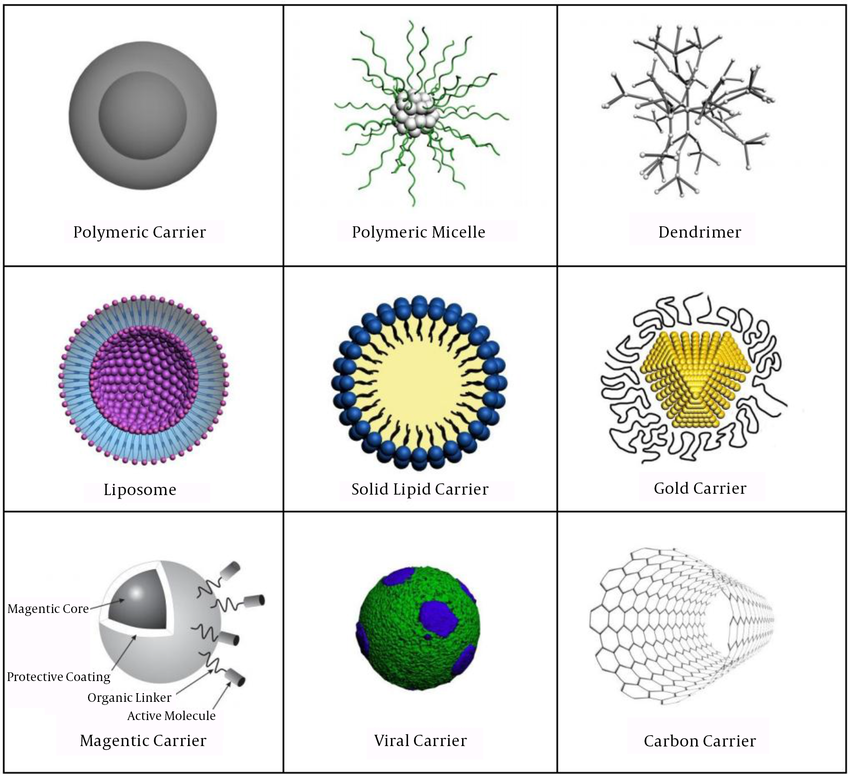Targeted Drug Delivery: Precision Medicine at the Nanoscale
What is Targeted Drug Delivery?
Targeted drug delivery is a cutting-edge approach in nanomedicine that aims to selectively transport therapeutic agents to specific tissues, cells, or even intracellular compartments. By directing drugs to their intended sites of action, targeted delivery systems enhance treatment efficacy, reduce side effects, and minimize systemic toxicity compared to conventional drug administration methods.

Key Components of Targeted Drug Delivery Systems
Targeted drug delivery systems typically consist of three main components:
- Nanocarriers: Nanoparticles, liposomes, polymeric micelles, or other nanoscale structures that encapsulate or conjugate the therapeutic payload. These nanocarriers protect the drug from premature degradation, enhance its solubility and bioavailability, and facilitate its transport to the target site.
- Targeting Ligands: Molecules such as antibodies, peptides, aptamers, or small molecules that specifically recognize and bind to receptors or biomarkers overexpressed on the surface of diseased cells or tissues. These ligands enable the nanocarriers to selectively accumulate at the target site while minimizing off-target effects.
- Responsive Triggers: Stimuli-sensitive elements that trigger the release of the drug from the nanocarriers in response to specific microenvironmental cues, such as pH, temperature, enzymes, or light. These triggers ensure that the drug is released only at the intended site of action, further enhancing the targeting specificity and therapeutic efficacy.
Types of Targeting Strategies
Targeted drug delivery systems can employ various targeting strategies depending on the nature of the disease and the desired site of action:
Passive Targeting
Passive targeting relies on the enhanced permeability and retention (EPR) effect, which is a phenomenon observed in many solid tumors and inflamed tissues. Due to the leaky vasculature and impaired lymphatic drainage in these areas, nanocarriers can preferentially accumulate at the disease site without the need for specific targeting ligands. This strategy is widely used in cancer nanomedicine to deliver chemotherapeutic agents to tumor tissues.
Active Targeting
Active targeting involves the functionalization of nanocarriers with targeting ligands that specifically bind to receptors or biomarkers overexpressed on the surface of diseased cells. This strategy enables the nanocarriers to selectively recognize and interact with the target cells, leading to enhanced cellular uptake and drug delivery. Active targeting is particularly useful for delivering drugs to specific cell types, such as cancer stem cells or immune cells, or for crossing biological barriers, such as the blood-brain barrier.
Multistage Targeting
Multistage targeting combines different targeting strategies to achieve sequential and hierarchical delivery of drugs to specific tissues, cells, and subcellular compartments. For example, a nanocarrier can first employ passive targeting to accumulate in the tumor microenvironment, then use active targeting to bind to specific cancer cells, and finally release the drug in response to intracellular triggers, such as pH or enzymes. This approach enables precise control over the spatial and temporal distribution of the drug, maximizing its therapeutic efficacy while minimizing off-target effects.
Applications of Targeted Drug Delivery
Targeted drug delivery has a wide range of applications in the treatment of various diseases:
Cancer Therapy
Targeted delivery of chemotherapeutic agents, small molecule inhibitors, or nucleic acid therapeutics to tumor tissues can significantly enhance the efficacy of cancer treatment while reducing systemic toxicity. By selectively targeting cancer cells and their microenvironment, targeted drug delivery systems can overcome drug resistance, inhibit tumor growth and metastasis, and improve patient survival and quality of life.
Neurodegenerative Diseases
Targeted delivery of neuroprotective agents, growth factors, or gene therapies to specific regions of the brain can help treat neurodegenerative diseases such as Alzheimer's, Parkinson's, and Huntington's disease. By crossing the blood-brain barrier and selectively targeting diseased neurons or glial cells, targeted drug delivery systems can slow down or reverse the progression of these debilitating disorders.
Inflammatory and Autoimmune Diseases
Targeted delivery of anti-inflammatory drugs, immunomodulators, or cell therapies to specific immune cells or inflamed tissues can help treat inflammatory and autoimmune diseases such as rheumatoid arthritis, inflammatory bowel disease, and multiple sclerosis. By modulating the immune response and reducing inflammation at the disease site, targeted drug delivery systems can improve the efficacy and safety of immunotherapies.
Vaccine Delivery
Targeted delivery of vaccines using nanocarriers can enhance the immunogenicity and efficacy of vaccination while reducing the required dose and potential side effects. By selectively targeting antigen-presenting cells, such as dendritic cells and macrophages, nanoparticle-based vaccines can stimulate robust and long-lasting immune responses against infectious diseases and cancer. Moreover, targeted vaccine delivery can enable the development of novel vaccination strategies, such as oral, intranasal, or transdermal administration, which can improve patient compliance and reduce the need for trained healthcare personnel.
Challenges and Future Perspectives
Despite the remarkable progress in targeted drug delivery, several challenges remain to be addressed for its clinical translation and widespread adoption. One of the main challenges is the complex and heterogeneous nature of diseases, which requires the development of highly specific and versatile targeting strategies. Another challenge is the scalability and reproducibility of targeted drug delivery systems, as well as their long-term stability and biocompatibility.
Future research in targeted drug delivery will focus on the development of multifunctional and intelligent nanocarriers that can respond to multiple stimuli, deliver multiple drugs, and provide real-time monitoring and feedback. The integration of targeted drug delivery with other emerging technologies, such as nanotechnology, gene editing, and immunotherapy, will open up new opportunities for precision medicine and personalized therapy. Furthermore, the establishment of standardized protocols and regulatory guidelines will facilitate the clinical translation and commercialization of targeted drug delivery systems, bringing their benefits to patients in need.
Further Reading
Journal of Multidisciplinary Healthcare, Targeted Drug Delivery — From Magic Bullet to Nanomedicine: Principles, Challenges, and Future Perspectives
Journal of Drug Delivery Science and Technology, Nanocarriers for targeted drug delivery
